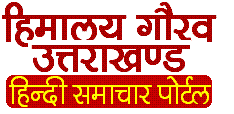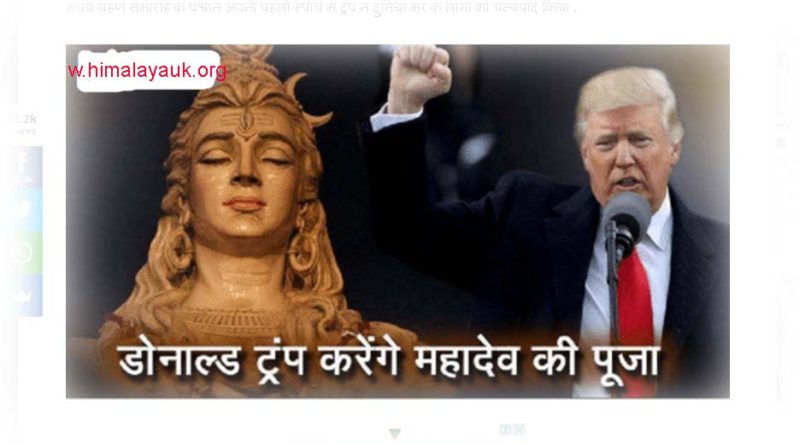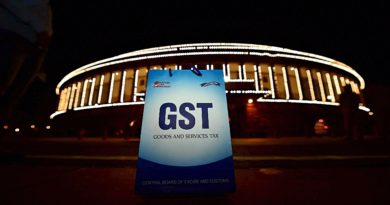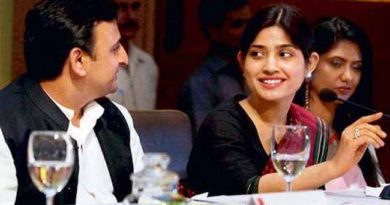ट्रंप की महादेव भक्ति
श्री शिव विष्णु नाम के मशहूर मंदिर से नारायणचार्य एल दिगालाकोटा पंडित जी ; Execlusive; www.himalayauk.org (Leading Digital & Print Media) Report;
ट्रंप की राष्ट्रीय प्रार्थना सभा में प्रार्थना करने वाले कई धार्मिक नेताओं के बीच एक हिंदू पुजारी ने पूरी दुनियां को सुखद आश्चर्य से भर दिया, खासतौर से भारत के सेकुलर नेताओ को । ट्रंप के अमेरिका के 45वें राष्ट्रपति के रूप में शपथ लिये जाने के एक दिन बाद शनिवार को प्रार्थना सभा का आयोजन हुआ। प्रेजिडेंशियल इनॉगरेशन कमेटी ने बताया कि मैरिलैंड के लनहम में श्री शिव विष्णु नाम के मशहूर मंदिर से नारायणचार्य एल दिगालाकोटा शनिवार को वॉशिंगटन नेशनल कैथ्रेडल में आयोजित होने वाली राष्ट्रीय प्रार्थना सभा में प्रार्थना करने का निर्णय लिया गया । शायद ऐसा पहली बार था जब राष्ट्रीय प्रार्थना सभा में किसी हिंदू पुजारी को बुलाया गया है। अमेरिका में जॉर्ज वॉशिंगटन के समय पहली बार राष्ट्रीय प्रार्थना सभा का आयोजन हुआ था। प्रेजिडेंशल इनॉगरेशन कमिटी ने बताया कि राष्ट्रपति के रूप में सभी अमेरिकियों के लिए ट्रंप की प्रतिबद्धता को सुनिश्चित करने के मकसद से इस प्रार्थना सभा का आयोजन किया जा रहा है।
राष्ट्रपति पद का चुनाव जीत चुके डोनाल्ड ट्रंप ने अमेरिका के 45 वें राष्ट्रपति के रुप में शपथ ली है. शपथ ग्रहण समारोह में सबसे खास बात यह रही कि इसमें पंडितों ने वेद मंत्र का जाप किया . इससे पूर्व ट्रम्प की बेटी ने दिवाली भी मनाई थी ट्रम्प और उनका परिवार हिंदूवादी छवि का है . वो हिन्दु रीति-रिवाजों में यकीन भी रखते हैं . अमेरिका के नए राष्ट्रपति डोनाल्ड ट्रंप वाशिंगटन नेशनल कैथड्रल के स्थानीय शिव मंदिर में पूजा करेंगे। खबर के मुताबिक मैरीलैंड के लन्हाम में स्थित श्री शिव विष्णु मंदिर के पुजारी नारायणचर एल. दियाला राष्ट्रीय प्रार्थना सभा में ट्रंप के लिए प्रार्थना करेंगे।
देवों का देव भगवान शिव को शंकर, भोलेनाथ, महादेव, महेश, नीलकंठ के नाम से भी जाना जाता है. शिव प्रमुख देवताओं में से एक हैं. वेद में इनका नाम रुद्र है. यह व्यक्ति की चेतना के अन्तर्यामी हैं. भगवान भोलेनाथ को संहारक माना जाता है. इसके बावजूद ये भक्तों से शीघ्र की प्रसन्न हो जाते हैं और उनकी हर मनोकामना पूर्ण करते हैं.
श्री शिव विष्णु नाम के मशहूर मंदिर से नारायणचार्य एल दिगालाकोटा पंडित जी आये थे, हिमालयायूके की उस मंदिर केे बारे में विस्तार से एक रिपोर्ट
Sri Siva Vishnu Temple (SSVT) is a Hindu temple located in Lanham, Maryland, about 12 miles (19 km) from Washington D.C. It is one of the largest temples in the United States. The actual temple construction began in 1988 and the last deity consecration took place in 2002.
The Temple is located on Cipriano Road one mile away from the NASA Goddard Space Flight Center. There are two churches located on the same road. The Murugan Temple of North America is located in the vicinity. Deities represented in the temple include Andal, Ayyappa, Durga, Ganesha, Karthikeya, Krishna, Lakshmi, Navagrahas, Parvathi, Rama, Sarasvati, Siva, Sudarshana, Venkateshwara and Vishnu.
Temple History
Milestones of the Hindu Society of Victoria
The inception of the Society
On Saraswarthi Pooja day in 1982, organised by the Ceylon Tamil association at Hedgely Dean Court in Glen Iris the Hindu Society of Victoria was officially launched. The newly elected MC immediately swung into action and organised monthly prayer meetings at the Prahran Migrant Resource Center on the last Saturday of each month. The first prayer meeting was held on the last Saturday in November 1982 at 6.00 PM.
On 21 June, 1984 the Hindu Society became an incorporated body after duly adopting a constitution. The principal objective of the constitution was the building of a traditional Hindu Temple in Victoria.
Purchase of Land
In March 1984 it was decided to purchase a piece of land in the Whittlesea or Springvale areas. A block of land at Whittlesea and another at Carrum Downs were identified according to agama shastras as they specify that Shiva temples are aqusition of land built on virgin lands. The society bought the land of 14.35 acres at Carruin Downs for $72,300. The MC members among themselves raised about $11,000. Pledges for interest free loans were obtained from other members of the Society. A ten-year loan of $45,000 was secured from the State Bank of Victoria. The balance of the required money was raised through additional interest free loans. Thanks to the generosity of the members and well wishers, the loan was repaid within 18 months.
Birth of” Panchavati”
The first issue of the ‘Panchavati,’ the official newsletter of the Hindu Society, aimed primarily to provide information about the temple building project and forthcoming religious events, was released in August 1985. It would appear that the first issue came out as ‘Panchamurti’ and subsequently the name was changed to ‘Panchavati’.
Site Developments
Through a process of discussion ultimately it was decided to have Sri Shiva and Vishnu both as presiding deities adjacent to each other and with two ‘moolasthanams’. The first pooja at the temple – the groundbreaking ceremony was performed in early 1986. A ‘Bhoomi Pooja’ ceremony was performed to invoke tho blessings of the Gods. From then onwards events like Thai Pongal, Hindu New Year, Diwali etc began to be celebrated at the temple site.
The design work, which started in 1987, provided for two main shrines – those of Sri Shiva and Sri Vishnu with two separate entrances or Rajagopurams. The other separate shrines were those associated with these deities. These were – Sn Ambal, Sri Ganapathy, Sri Chandikeswar and Sri Subramaniam with Sri Shiva. The Shrines of Sri Mahalakshmi, Sri Andal, Sri Ram, Sri Lakshman and Sri Sita, Sri Gopalkrishna and Sri Hanuman were those associated with Sri Vishnu. In addition, the shrine of Navagrahas, Kodisthambam, Nanthi, Palipeidam and Garudan were included. Another shrine was provided for to keep the Utsawa Moorthies. An application for a planning permit was submitted to the Springvale Council in 1987 and the permit was issued on 5 January 1988. The building permit was issued in 1989. This work along with the access road was the preliminary part of the project and costed $20,000.
The foundation stones (‘Pancha-shila’) were cut in India and blessed by the chief priests of the famous temples in India and used for the ‘foundation stone laying’ ceremony on 5th June 1988. Before the building operations commenced, in Keeping with traditional beliefs, an idol of ‘Bhairavar’ and ‘Pillaiyar’ and a few other deities were installed at the temple grounds.
Temparary Building
A decision was taken early in 1990 to construct a temporary building at the temple grounds. The first pooja at this ‘temporary sanctuary’ was held on 6 May, 1990. For some time the prayer meetings at Prahran continued alongside the activities at the ‘temporary sanctuary’. The last prayer meeting at Prahran took place on May 30, 1992. Poojas were performed at the temporary temple an Fridays and Sundays. Collections from poojas surprised even the cynics.
The building permit was issued on 25 January 1990. The project was divided into five stages, the last of which, under the first phase was the construction of the Rajagopurams. Cost estimates for the first phase was about $1.25m. In October, 1990, after procuring connection of all necessary services to the site, the first stage of the project viz., excavation work commenced. This was followed by the reinforced concrete work to the foundations, slabs, columns etc. There was a lull in the building activity while the Society was busy organizing the finance necessary to continue with the project. The Society clinched a deal with the then State Bank of Victoria for a loan of A$150,000 (originally $100,000 and subsequently increased to $150,000) and an overdraft facility of A$60,000. In April 1992 building activity re-commenced with the erection of roof steel frames, external block wells, windows, electrical and plumbing conduits etc. On 20 November, 1992, the Sthapathi and his team of eight artisans arrived from India and commenced work on the Shrines. Sri Shiva Shrine was the first to be built followed by the Shrine of Sri Vishnu. Concrete pillars changed into Shrines while sculptured vimanams, rising above aluminum members, could be seen by passing motorists on the Frankston-Dandenong road. A batch of six additional artisans arrived from India in January 1994 to accelerate the pace of construction in order to meet the Maha Kumbhabhishakam deadline of May 1994. By about the beginning of May a beautiful temple stood high above the tall trees on virgin soil not far from the famous Patterson Lakes of Carrurn Downs.
Between 1992-1996, the peak construction period, in excess of a million dollars was raised. During this peiod, Society successfully formalized an interest free loan of hid Rs 1,000,000 from the Thirumals Thirupathy Devasthanam (TTD).
Mahakumbabhishekam
The d-day, the date for the Mahakumbabhishekam, was fixed for May 22, 1994. A Task Force with a number of working groups was set up to organize the various facets of the ceremony. It was necessary to ensure that all items including the idols, doors etc were delivered on schedule. Two containers were loaded in time and arrived in Melbourne on schedule. More than ten priests from India including those from Kanchipuram and Sri Lanka were arranged to perform the rigorous rituals and procedures associated with the ceremony, along with priests from the other temples in Australia. A group of three Nadeswaram players from India was also brought specially for the ceremony. Representatives also came from Thirupathi in India and other states in Australia. Beginning from 12 May, for the next ten days ‘Yagams’ were conducted in the temporary ‘Yaga Salais’ erected for this purpose which was attended by hundreds of devotees.
May 22, 1994 is a red-letter day in the lives of the Hindu community in Victoria. On this day all roads led to Lot No 57, Boundary Road in Carrum Downs. The morning saw the heavens open up a great deal of anxiety to the organizers. The question that agitated everyone’s mind was, once in a life time event going to be marred by foul weather?’ Even before this, for the first nine days of the ceremony, driving rain and very strong winds almost uprooted the tents. Fortunately, a group of strong and determined volunteers managed to almost hold on to them day and night for the duration of the ceremony to ensure that they did not fall down. The auspicious was 10.08 AM. At about 7.00 in the morning, to the relief of thousands of devotees, the torrential downpour stopped all of a sudden as if at someone’s command, prompting the true believers to talk of the miraculous powers of deities. More than 5000 devotees participated in a heath-taking ceremony conducted by Hindu priests from India, Sri Lanka and Australia, chanting mantras to the accompaniment of deafening nathaswara music, all of which was drowned by the ‘Om Shiva, Hari Om’ chanting of a sea of humans. The hail and the corridors of the temple were overflowing with devotees who kept surging in order to get a glimpse of this exciting ceremony, for many their first. The most important moment was the pouring of holy water from the Kumbams on the two Vimanams of Sri Shiva and Sri Vishnu Shrines using two cherry pickers, a helicopter showering flowers from the sky. Many wept at this experience and the devotees stretched their hands to get a drop of the holy water. Some devotees mentioned later that their wishes were fulfilled after they took this holy water as Prasad. At the conclusion of the morning ceremony for the deities, a Maheswara pooja was performed enabling the devotees to partake in the lunch organized for the occasion. In the evening devotees were treated to a rare music concert provided by local and Indian artists. Crews from SBS TV and Radio also attended the ceremony and covered it in their news bulletins. May 22, 1994 was a day in the life of Hindus in Victoria that saw the dream of Hindus in Victoria come true.
Rajagopuram Kumbhabhishekam
Three years to the month, another milestone was reached with the Kumbhabhishekam of the Raja Gopurams on 25th May 1997. This was in many ways a repeat of the ceremonies which were performed at the time of the Maha Kumbhabhishekam, but on a smaller scale. Many devotees who missed out the ceremony of 1994 were able to appreciate the importance of the rituals and the amount of work involved in organizing a ceremony such as this. During these three years, the Shri Shiva Vishnu Temple had come to take center stage in the life of the Hindu community in Victoria. The temple itself functions in complying with agama sastras and adhered to Hindu traditions. Days of major religious significance were observed. Annual Brahmotsavams for the two principal deties are conducted. Resident priests are now available for devotees to perform archanas, abhishekams etc. Hindus in Victoria now had not only a temple, as good as any in their land of birth as a place of worship, but also a temple which enables the spirit and practice of Hinduism to be kept alive in the hearts and minds of this generation and the generations to come. The Society had invested in excess of $1.5 million up to this stage.
Further Developments
The building activity at the temple has never stopped. After 1997, the car park area around the temple was leveled and asphalted at a cost of $80,000 and two priest quarters, one with a guest suite were constructed at a cost of $150,000. Work for a Ther (Ratham) shelter and connecting gas to the temple and priest quarters are complete. Plans for construction of the temple kitchen and paving the area in front of the temple and the outer courtyard have also been completed. The proposal to establish an elderly citizens home in conjunction with grants provided by the ministry of housing had to be abandoned after completion of all the preliminary steps by the enequivical objection of the water board which was essential for the granting of the building permit. The AGM of 2002 has authorised the management committee in principal to explore the construction of a cultural centre which will include performance hail and a library, which may cost around four million dollars. Commitment and construction of this project will take the society to its next dimension, providing the facilities for the community to conduct its programs and much of its activities around the temple.
Management
The running of the Shri Shiva Vishnu Temple is in the hands of the management committee of the Hindu Society of Victoria. There are a number of sub-committees e.g. Finance, Temple Building, Maintenance, Corporate Affairs etc to advise the management committee in various matters. The Hindu Society has a membership of over 1000 with representation from the various Hindu ethnic groups living in Australia. Membership is open to all that subscribe to the objectives of the Society. Management committee members are elected annually, The Hindu Society has appointed a Manager and an assistant manager who are responsible for the day to day administration of the temple.
Dreams come true
The Shri Shiva Vishnu Temple has its place among the Hindu temples now all over the world. The vision, dedication, courage and indomitable spirit of Hindu Society of Victoria gave the Hindu community of Victoria a priceless and everlasting legacy in the form of a truly magnificent temple. This unique temple will transcend time barriers to remain as an icon symbolizing the contribution of the Hindu community to a multicultural society. The history of Shri Shiva Vishnu Temple would be incomplete and imperfect without adequate mention of the role of the hundreds of volunteers who sacrificed all their spare time and worked with a missionary zeal to save tens of thousands of dollars for the Hindu Society. The contribution of the volunteers, without exaggeration, was the most critical of all the contributions. The history of Shri Shiva Vishnu Temple may well have been different, or perhaps no history at all, had it not been for the magnanimity and generosity of benefactors in the Victorian Hindu conununity and well wishers who provided on-going fmancial support and the selfless services of volunteers, whom we salute.
The Carrum Downs Shri Shiva Vishnu Temple was conceived and built as a traditional Hindu temple in which Sri Shiva and Sri Vishnu poojas and other rituals are performed in a way similar to any temple in South India and Sri Lanka. The first festival was Holi in 1994 followed by celebration of the other festivals such as Deepawali, Ram Navmi, Ganesh Chaturthi and Krishna Janmastmi. Since 1998, a monthly Havan pooja is held on the last Sunday of the month, which has proved to be very popular with the devotees. Bhajans are sung every Friday evening in which many devotees participate.
The management committee is constantly improving the facilities at the temple for its devotees. Celebration of marriages at the temple has become a common feature among the community. Canteen facilities (Cafe Annapoorani) are available between Thursday to Monday with external and internal catering facilities to functions. The Management committees of the past 2 decades and the unsung volunteers have every right to be proud of their achievement!!
presents by; www.himalayauk.org (Leading Web & Print Media)
publish at Dehradun, Uttrakhand; mob,. 9412932030 Mail; csjoshi_editor@yahoo.in & himalayauk@gmail.com




